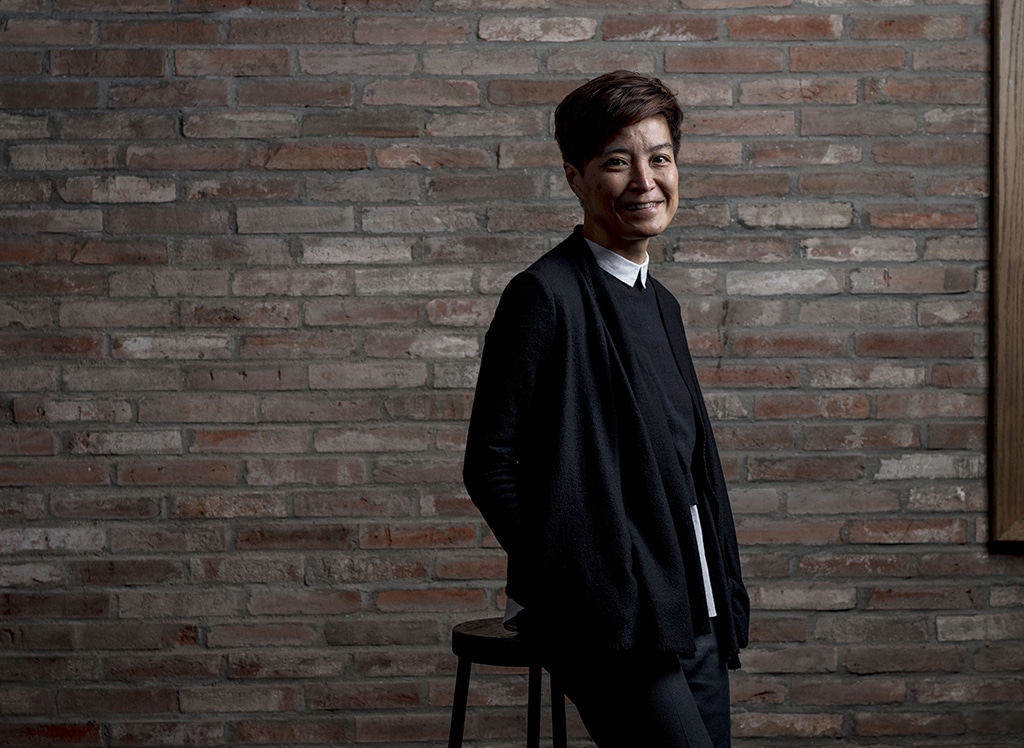Heather Jones: You’re a curator and writer currently based in Hong Kong. Can you tell us a little bit about your background and how you came to work in the arts?
Yang Yeung: Seems like a Stone Age ago! The first time I knew there was such a thing as contemporary art in Hong Kong was in the year 1999. At that time I was a documentary video director at Radio Television Hong Kong – a public broadcaster. I was freelancing and was selected to be on a team of directors to research the possibility of making programmes on art in Hong Kong – more visual art than performing arts. My memories are blurry now, but somehow I got to know Parasite Art Space, at the time a small artist-run space co-founded by artist Kith Tsang. The programmes didn’t happen in the end. The team reviewed our research and the conclusion was no one would be interested in watching this kind of programming in Hong Kong! Such a different sensibility compared to the here-now. Parasite is well established today as a contemporary art space and has expanded a lot. Kith remains a great friend, and I am still grateful to him and others at Parasite for involving me in their art criticism classes at the time. These were quite informal gatherings. We would come together once in a few weeks to discuss and write about the exhibitions current at the space. Some of the writings would be published in small pamphlets or booklets. Art writing was much needed then and still now – but again, things are changing for the better.
In 2003, Parasite Collective (a group of Parasite members and criticism class members, initiated by Kith Tsang) was chosen to represent Hong Kong in the Venice Biennale pavilion. I was in the group, feeling very daunted, but also grateful, to be thrown into this new horizon. In addition to working with the group, I encountered the work of Su-mei Tse, artist of the Luxembourg pavilion, for the first time. Her solo exhibition was called “air-conditioned”. I remember very well standing in front of her video installation L’echo, and thinking, this is a work that more people in Hong Kong should see; it would be an awful waste if I were the only one seeing it. I was impressed by the work’s simplicity in concept and material form: the generous quality of light the video presents, and its aspiration for the intimate relation humans could have with ourselves and the infinite world of nature. Tse’s work has since been a beacon to my practice – her work initiates me into learning how to see and perceive, and more generally, and gradually, I realise for me, following how artists think and work is something I’d like to do for life.
I must also speak of anthropology and theories of feminism. I was trained in them. While I didn’t make any academic career out of them, they have become my way of life, and reference points that keep regulating my thinking – with varying degrees of success, but still always pertinent. I have many teachers and peers to thank.
The above is in relation to the past… More recently, I was asked by an artist friend (since it’s a participatory project and I was one of the hundreds participating) what I think is “my role in life”. If I may share my responses here with you (because I find this related to the general question of ‘who I am’):
“My role in life? (the idea is a contradiction in terms, for ‘role’ is socially, culturally, politically ascribed, whereas life originates from nature (though it is through the humanly devised that it manifests itself) Let me put it the way I feel closer to – what I do, what I think I am doing, and what I think this prepares me for (I deliberately leave out – as if possible – what I have done as retrospective to the past) – This first list is what is up to me:
1. I educate (myself and others) – the root meaning of the term educate (Latin) is to bring out; to bring out the best of myself and others so we can flourish and shine in our own individuated beauty.
2. I transmit rather than create. To transmit is not to thoughtlessly click ‘forward’ or ‘share’ to circulate anything that has come my way, but closer to point 1 above – to share what is choice-worthy.
3. I write around and along art with this sense of transmission – this may be why an artist friend said she feels I write as if I were a guardian of art. I must thank her for this.
4. I fight against gestures that demand us to stop thinking.
The second list is what is not up to me: To be born with the name of the sun (Yang), I aspire to staying strong and shining and to love shadows and the night. To be born on the first day of September, I aspire to be a learner as long as I live. To be lucky enough to be surrounded by creativity of many kinds (artists, thinkers, workers, sewers, weavers, cleaners, youngsters, movers, shakers…), and by poetic thinking of sorts, I aspire to articulate as many layers of reality conjured as a life always already shared with others. To answer your question about ‘my role in life’, I keep asking, ‘Am I making peace by making space for myself and others?’ ”
I guess I have been through the days when I needed one identifier to move around – I’ve never been comfortable with that situation anyway. These days, I realise and accept that I’m quite weird being always an ‘outsider’ inhabiting crevices in between boundaries…or, I aspire more to being able to flow like water does. I try.
HJ: From where does your interest in arts discourse stem? Do you have a specific goal, lens or approach that you consider when beginning your writing process?
YY: Perhaps the response above partly answers the first part of the question. There are a few more things… While I was initiated into art writing quite a while ago, I think I have only acquired the confidence in the last four or five years. Being involved with Art Appraisal Club, founded by independent curator Ying Kwok, with five other art critics/ writers in Hong Kong, has been a big help – for my confidence and for learning different approaches. I used to write about only one work by one artist at a time because when I was in an exhibition, I always felt there was so much going on that if I cast the exhibition as the scope of the piece, it would not do justice to any individual work. Gradually I started to write about the practice of one artist or solo exhibitions. And recently, group exhibitions. There is no single approach, but after writing for some time, I realise there are a few questions I always fall back on when I think through the writing (not in any particular order):
1. What is happening?
I think of art as happening in situ, and I trust that art is always happening. My duty is to find it, to be fair to what has been done to make art happen. ‘What is happening’ could do with something ‘ordinary’, like, am I seeing or hearing things moving, or staying still, and if so, how? Do I find what I see opening up or closing in, and again, how? Etc.
2. What kind of texture, temperature, and quality of humanity do I see in the work?
I think art always already touches the human condition. I am interested in the humanistic aspects of art.
3. Is there one detail in the work that could be a hinge to the whole universe of the work/ the artist?
In what seems to be a small decision the artist makes, I always already find a lot that is telling about his/ her vision.
4. What singular and unique book list would I compile for this artist/ this particular work?
I believe artists are always ahead of or more than theoretical and philosophical thinking.
5. What aspect of the work should I not write about?
I tend to believe that words shouldn’t be put to some aspects of a work. Some ‘secrets’ have to be kept, or, I want to regulate myself against the authority that the written word may have over the coordinates the artists are conjuring, the coordinates that are beyond what words can do, sometimes.
6. Does what I am saying correspond to what I’m seeing/ hearing/ experiencing?
I’ve seen art writing that, with all good intention, writes a work away because there’s so much the writer needs to exhibit about his/ her own world, to leave readers little about what the artist is doing. My writing is certainly an encounter of my world and the artist’s world, but while these two worlds are both relevant, it’s the artist’s that should guide the writing, and the artist’s that should lead to the creation of a third space, in which many other things/ ideas/ could be admitted. It’s a process of enriching and envisioning, not one of just reaffirming what’s done, what’s already known.
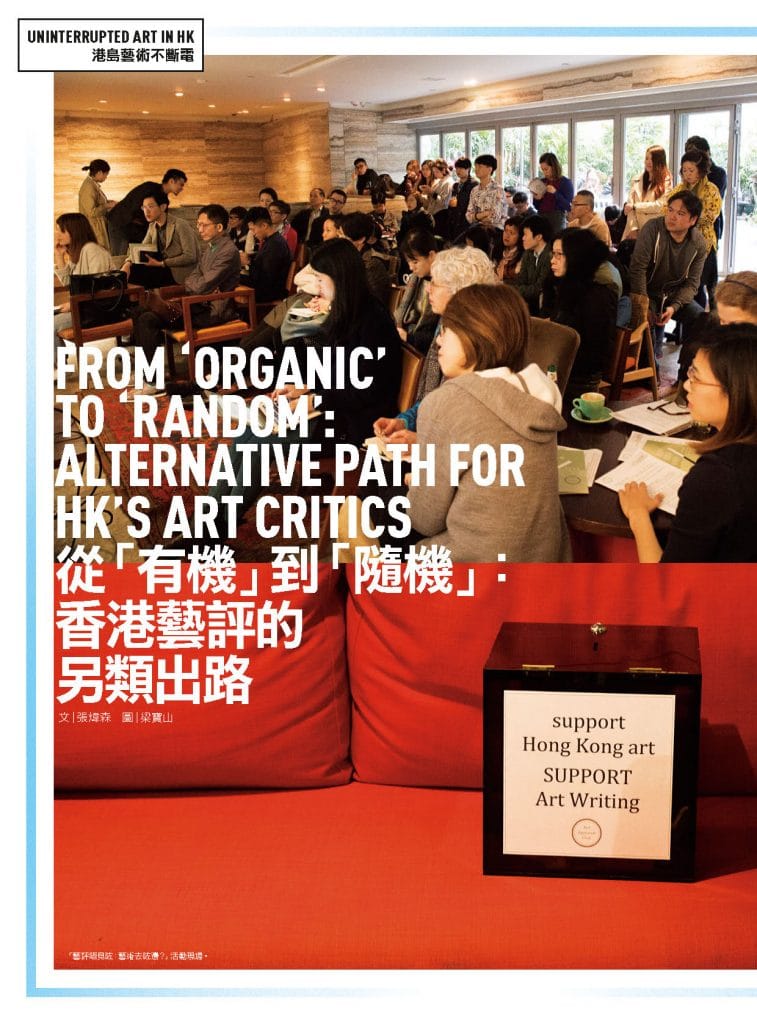
HJ: You founded an arts organization in Hong Kong called soundpocket in 2008 in order to build learning communities within the Hong Kong art scene, and you mentioned that soundpocket has no ambition of growing into a larger institution. Can you tell us more about the organization and its goals?
YY: soundpocket was founded in 2008. It was a year after I curated my first exhibition that made ‘sound’ a prominent idea. The exhibition was call ‘in midair – sound works Hong Kong 2007’. The seed was Su-mei Tse’s L’echo – I was a slow thinker and it took me 4 years after Venice to make this project! I brought her work, and other artists included Felix Hess (Netherlands), Cedric Maridet (Hong Kong), Anson Mak (Hong Kong), etc. After the exhibition, some artists in Hong Kong were encouraging me to make something more…not just projects, but perhaps an organization. I had a strong sense that artists interested in sound and listening needed support, and I also felt strongly that our society needed more active listeners.
I still remember consulting my poet friend on the name. The idea of ‘pocket’ was taken from John Berger’s book The Shape of a Pocket. The edition I have shows a photograph of people sitting on the slope of a mountain. They are at comfortable distances from each other and take up perhaps one-fifth of the whole image. The rest is the sky. I wanted to create something that is not rigidly pre-defined, but where possibilities could be admitted. I am not interested in becoming an authority that would tell people what I think ‘sound art’ is – I am still very allergic to this term that is now quite circulated. I am more interested in being like a pocket – the comings and goings change its shape. Now, soundpocket is very much about bringing artists of different generations together, to listen to each other, to form learning communities, to swap skills and ideas, to support each other. We also engage with non-art organizations to share our vision in listening, and in sound in art and sound as art.
Indeed, we don’t aspire to grow into a larger institution. To this, I’d say, I am afraid of standing on stage and of height, but I’m not afraid of being rejected. We are proud to be the microbe of the art food chain. There is much we can contribute from there.
There are other important moments in the society of Hong Kong, and the arts community around the time we were founded, and also changing over the past ten years, that may be of interest to the Stavanger community. I am more than happy to give a public presentation on this.
HJ: In an earlier conversation you mentioned the politics involved in writing about art in Hong Kong, as well as using writing as a way of slowing things down. Can you speak to the current trend in the relationship between art and politics in Hong Kong?
YY: In the art community in Hong Kong, something is brewing in terms of more protection to artistic freedom. We’ve experienced cases of censorship and self-censorship, and first thing first, we need more information and documentation. For now, as the process is still ongoing, my reflection is that there is a lot of potential in art that is under-recognised – a lot of art is not politically driven or carry narrow political aims. There is however a lot of questions about what it means to be human – what it means to be condemned to be human – that art lays bare for us. This is more urgent, at a time when the world is not safe, when people choose to bomb each other rather than understand and listen to each other. I see a lot of artists in Hong Kong, after the Umbrella Movement, but not exclusive to that, confronting their own assumptions about what making and ‘doing’ art is about, and transforming them, shifting them. It’s a very interesting time for us.
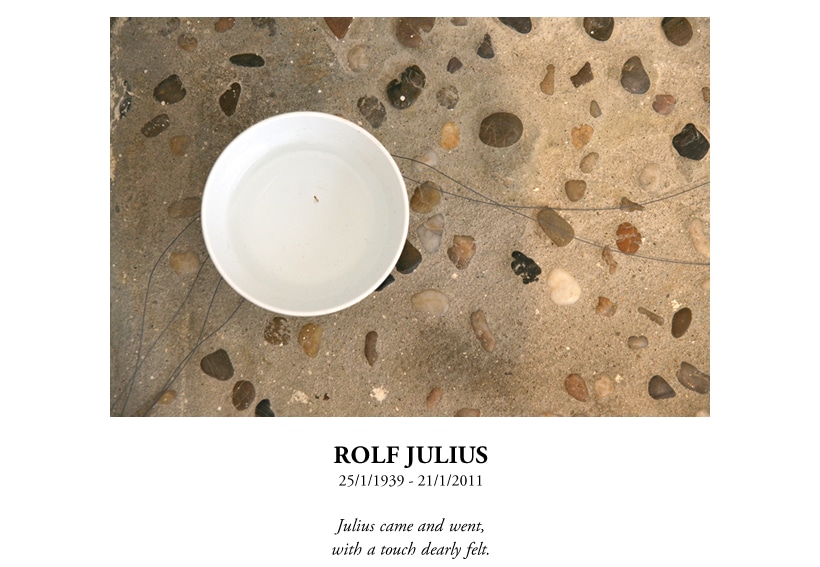
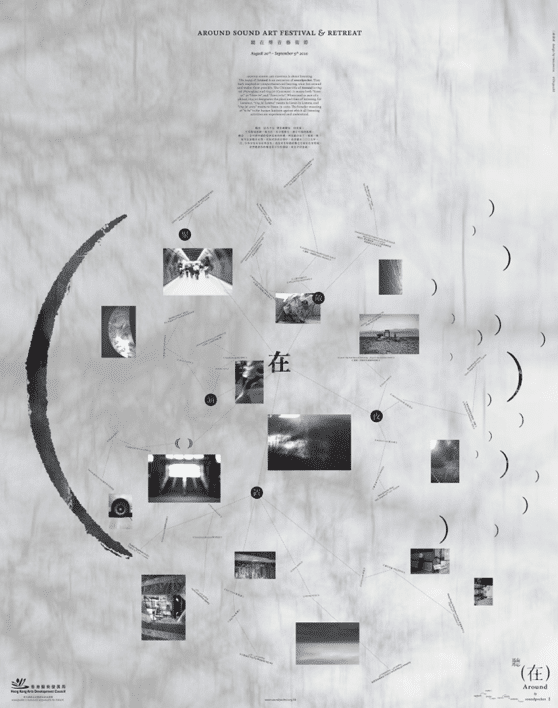
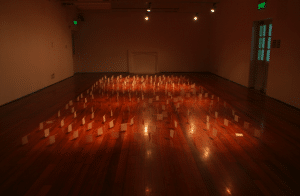
HJ: At CAS we often talk about trying to find a balance between local specificity and international relevance. Is this something that you experience in Hong Kong as well, and if so how do you navigate that boundary?
YY: I see what you mean, but my experience has been a little different. Let me respond to this on the level of soundpocket’s work and as an individual practitioner. At soundpocket, we support a way of making art (ie. by sonic means and as inspired and determined by listening) that has only begun to take shape. I would say there is yet to be a community, but there are more individual artists who carry a practice that includes the thinking of sound and listening. There is a long way to go. soundpocket has never prioritised sound and listening in the sense of isolating them from other materials, form, or concepts. It’s always about connecting, and how to connect. The aspiration here, in encouraging artistic practice, has little to do with ‘local’ or ‘international’. These categories don’t describe much of what artists do – they describe a context of a certain politics and economics, but not yet the art. They may become relevant one day, but as far as I can see, not yet. What’s more important is to articulate the subjectivity from which each work/ gesture/ iteration manifests itself. Each artist is a little (or a lot) different, which the categories of ‘local’ and ‘international’ can barely address.
As an organization though, we support artists who, as individuals, may find it hard to connect outside of their localities (due to multiple reasons). From day 1, I was driven by the idea that I would bring artists who will inspire those in Hong Kong here, and I’ll try to set up structures to support the mobility of Hong Kong artists to encounter what they won’t have to chance to in Hong Kong. It wasn’t until quite recently, when I was in the UNESCO workshop, that I realize ‘artist mobility’ is a core component in upholding the freedom of cultural expression. So here, again, it’s not about ‘local’ or ‘international’ as sensibilities; it’s about bringing likeminded people together, at a particular place and time, which is open to receive the art the artists want to make. soundpocket didn’t have an ambition to be ‘international’ if that means recognition of some kind (and I don’t even know how to talk about this as other than ‘talk of the town’, or ‘fame’, or whatever). We do have the ambition of seeking out artists who would inspire each other.
At the early stage of our inception, a German artist came visit us and said, there were probably around 30 organisations like soundpocket in the whole world. We are small islands, and we connect with each other. I always think of Foucault saying that in civilizations without boats, dreams dry out. Of course it doesn’t have to be literal – land-locked places are rich with dreams as much as those close to the sea. The point I think is to think of each other as human beings having the capacity for understanding each other, as whole human beings, not just as a practitioner here, a professional there, as if we could only think of ourselves as components of a market of division of labor.
On the individual level, I’d like to share this little excerpt from Vaclav Havel when he was asked about the worldwide literary success of Milan Kundera. “I personally like Kundera’s book, and that has nothing to do with how many copies were sold. And anyway, isn’t this continuing fear of being out of step with the world a clear sign of provincialism?” (from “The Politics of Hope” in Disturbing the Peace, by Havel). It’s a particularly succinct remark – I recall having been involved in protests related to art, that have been criticised as being ‘provincial’ for missing out on the ‘bigger picture’. At the time, in context, it was about making Hong Kong visible internationally, and evaluated alongside other ‘first world’ countries (such a dated term, but yes, it was, and perhaps still is, in the imagination of power today). Havel’s comment is such an important reminder about the harm of self-victimisation and the limits of thinking in those terms.
Lastly, as member of the Art Appraisal Club, I would say – speaking for myself only – that we come together because we believe Hong Kong artists need critical attention not only because “Hong Kong” has been under-recognised, but there is the potential of ‘competing universality’ (Judith Butler’s idea) in their concerns. It’s not about the economy of attention (as in the local and international), but in doing our best to make a case for things to be connected, as they are always already.
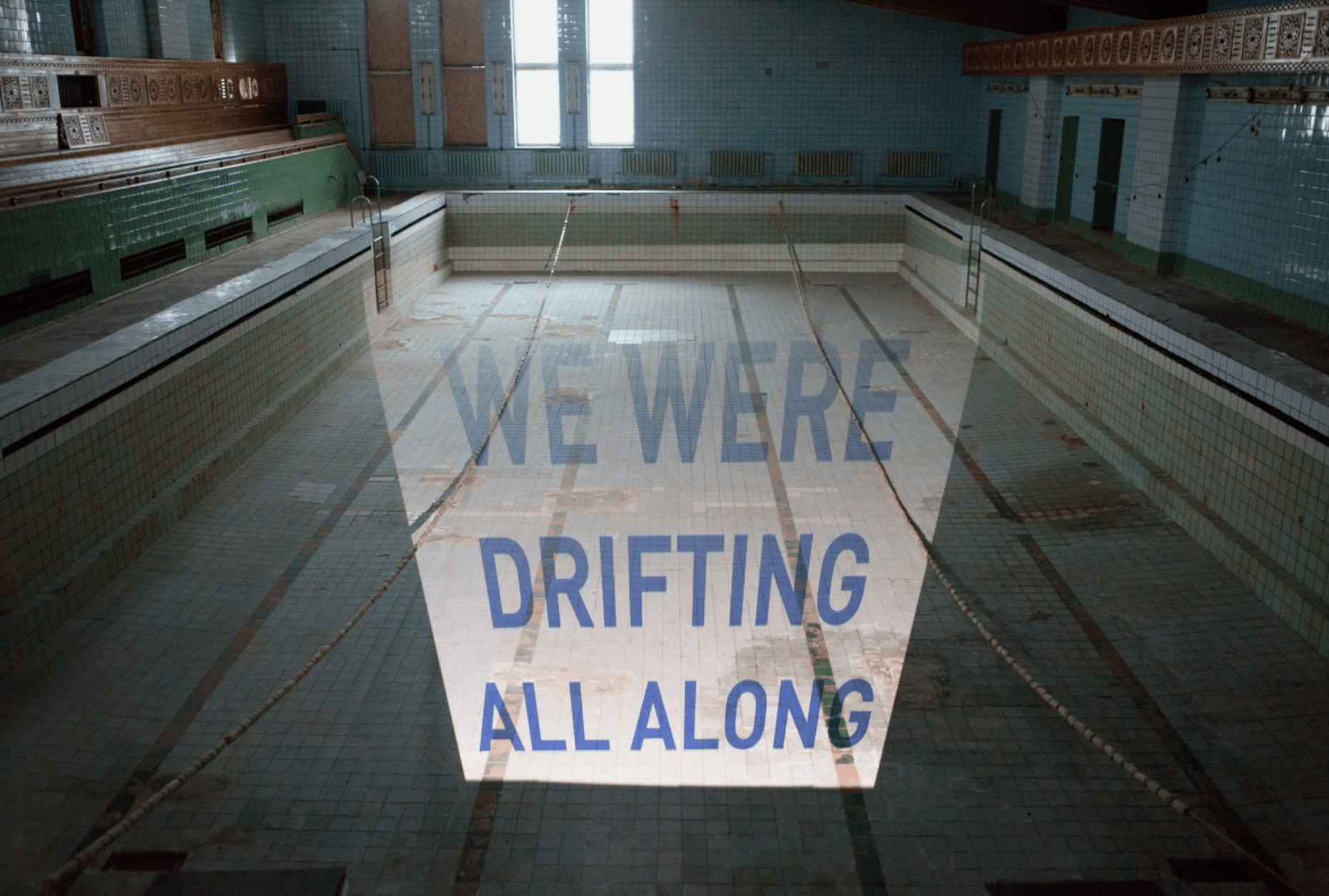
HJ: You’ve also talked about an interest in language, vocabulary, and artists that are engaged in the sensitivity of listening. Can you tell us more about your research interests and/or upcoming projects?
YY: First thing first. English is my second language. It’s also our coloniser’s language. I was studying in a missionary school from kindergarten to A-level (British system) and had to use English in all my classes since I was 8 or 9 -years-old, except of course for my Chinese language lessons.
My native spoken language is Cantonese. There is a shared written Chinese language, but there are variations [eg. specific phrases like ‘air conditioner’ – in Hong Kong, we say 冷氣 (laang5 hei3), whereas in PRC, air conditioner is 空調 (kong1 tiu4)] [Click here for more info] I write Chinese with the worst grammatical errors, and in Hong Kong, we write Chinese in traditional characters, not the simplified kind prevalent in the People’s Republic of China. This is a very complex question…
My upcoming projects, personally, is to keep writing. It is a necessity that I keep doing so. This has become how things come and where things go. One paper I am writing is on Hong Kong artist Kwok-in Tang’s socially-aspired (rather than socially-engaged) art. I will present the paper in a conference in Leiden in July. I am currently writing a piece on Samson Young’s recent solo in Hong Kong, entitled “Instrumentation”.
For soundpocket, we are thinking more of the implications of the future of our online library – The Library by soundpocket. We are now part of a regional alliance of libraries and archives to share more information on best practices regarding ownership, public engagement etc.
Since I also teach full-time at the Chinese University of Hong Kong, in a core texts program consisting of classics, I also reflect constantly on pedagogy. I have been thinking about character education or virtue education, and the idea of ‘humility’ as a virtue or not has been bothering me. I will make something of it soon in writing.
If I could define ‘research’ in the way I am doing it, I’d say I am currently still closely following the practices of artists I’ve mentioned in my responses to the previous questions, and also those I’ve written about (as archived in AICAHK). To follow what artists do is my research.
HJ: You will be in Stavanger as a CAS Resident this May. Do you have any specific desires of goals for your time here?
YY: The first thing I want to do (and will be compelled to) is to breathe what you breathe – to sense the smell of your air and sea. I would also like to listen to how rain beats your window pane, how your gutters echo (this is the time in Hong Kong when there are many bull frogs hiding in gutters and making them their sound boxes – beautiful songs!), how the silence of your libraries is in the day and during the night, how swimming at your side of the ocean would change the way my skin feels to my body, and how my footsteps would sound out encountering materials of your design. I also want to know why and how you aspire to art, and in particular, ‘public art’. I will write and walk and write and walk. I will escape into my solitude here and there, but will be always ready to connect. Thank you for sharing your home with me.
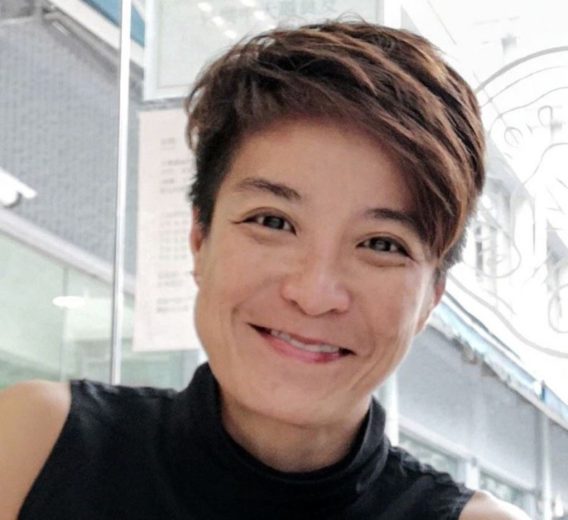
Yang Yeung is a writer of art and an independent curator. She founded the non-profit soundpocket in 2008 and is currently its Artistic Director. In 2015, she started independent project A Walk with A3 located at a back alley in Causeway Bay in Hong Kong to support the right of art to be in the streets and right of pedestrians to encounter art as a daily experience. Currently Yeung is a member of the international research network Institute for Public Art and contributes research writings on place-making public art projects regularly to the network’s conference and archive. She is member of the independent art critics collective Art Appraisal Club (HK) and the International Art Critics Association (HK). She is also Councilor on the board of Make A Difference (MaD), a regional platform based in Hong Kong that encourages social innovation and creative change-making for good. She was awarded the Asian Cultural Council Fellowship in 2013-14. She was selected to participate in the UNESCO training workshop on the 2005 Convention on the Promotion and Protection of the Diversity of Cultural Expressions in 2018. She currently teaches classics at the Chinese University of Hong Kong.


